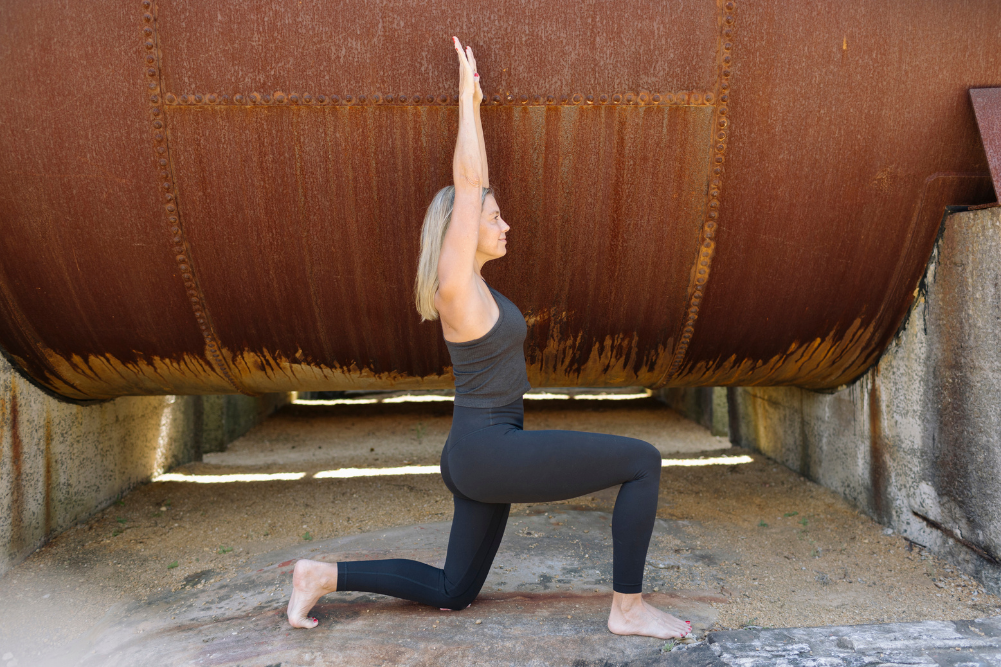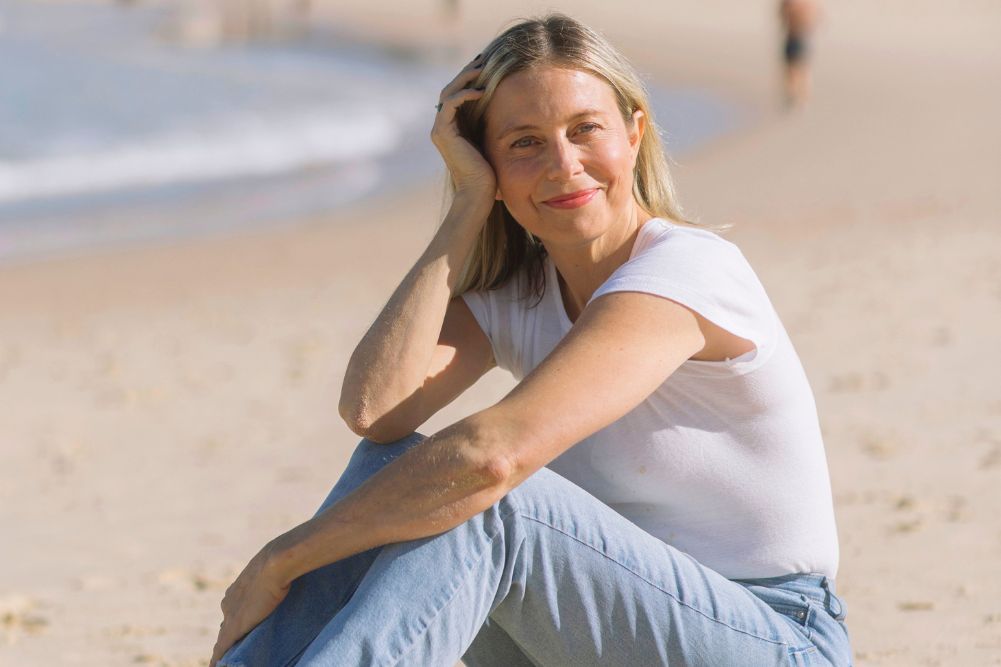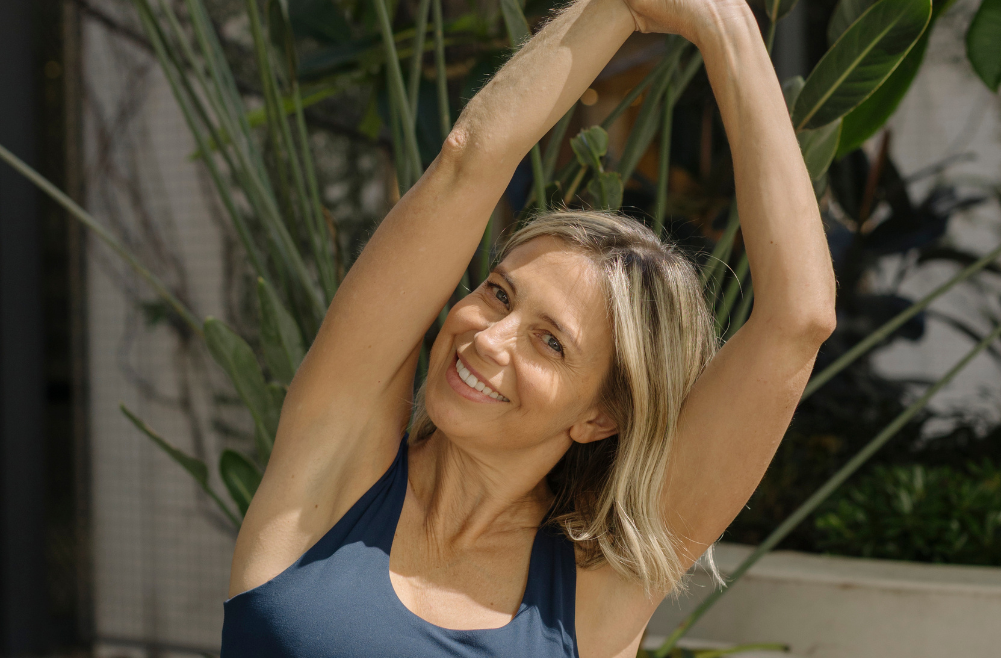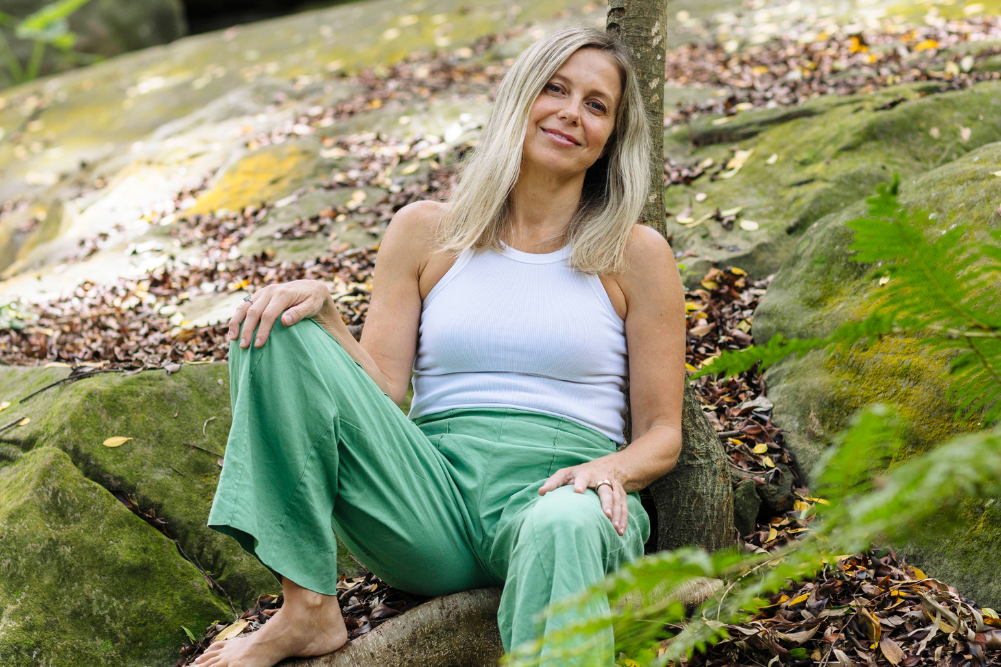Yoga to foster faith
“Faith gives us strength and allows us to remain increasingly unshaken in the ups and downs of life. We begin to receive nourishment from within. We discover the inner source of the nectar of contentment and joy. It brings us fulfilment and the power, stamina and agility necessary to pursue our path.” Ram Dass
Yoga to foster faith. George Michael said it. Bhagavad Gita said it. If there’s one thing in life you’ve got to have, it’s faith. Faith will hold you steady when nothing else can and connect you to a deep inner strength that no one can take away. But what exactly is faith and how do we practise it when nothing seems to be going our way?
What is faith?
Faith can be understood in many ways, but there are two key definitions we see most commonly used. The first is centred around a fierce commitment to a particular religious or spiritual belief. My grandfather was the living embodiment of this kind of faith. I witnessed how it held him steady throughout his life and gave himself, and those who loved him, peace in his death. He believed he was leaving this life to go somewhere better, and so the grace with which he faced his final days made me much less fearful for him. His faith was really a gift for us.
Some of us have an allergic reaction to the idea of faith in this way, due to the cultural understanding of it being wrapped up in dogma where organised religions have caused equal amounts of pain and suffering as the joy they have created. If this is the case for you, the other definition of faith may be far more liberating. It requires us to have trust in someone or something, either tangible or imperceptible, and the belief that they will always have your back. Building trust or confidence in any relationship doesn’t happen overnight. It takes time, patience, curiosity and deep humility. And in the process, we gain much self-knowledge and fearlessness in the choices we make. Faith, from this perspective, may be considered a lifetime practice benefiting us and the people around us, rather than something we just obtain.
Trust in the intangible
Shraddha in Sanskrit is referred to in many of the yogic texts. Patanjali refers to it in Yoga Sutras, as does Krishna in Bhagavad Gita, as being a key practice to reach enlightenment. From the yogic perspective, shraddha is faith, trusting in something intangible but not the blind following connected to the first definition. In the world of visibility today, seeing is believing, and we have lost the art of trusting in the unseen and unknown. The senses are constantly pulled outwards towards solid things in the manifest world every moment of every day. If I can see, feel, touch, hear, smell and taste it, then it exists.
The Uncertainty of Trusting the Unknown
We like to “know”, because from an evolutionary perspective, predictability makes us feel safe. Studies have shown that unpredictability can bring discomfort and uncertainty may lead to neural stress response, triggering the amygdala and even hypervigilance. It’s why we wonder what’s happening on our phones when we’ve been away from them for a while, and why waiting on test results, a job interview or a text from a new crush can feel like absolute torture. But faith says, “Whatever the outcome, you’ve got this.” It grounds you and offers a deep connection to your inner strength, come what may.
Yoga to foster faith and mindfulness practices are tools to foster this trust. When we do some asana, or conscious breath or meditate, the results aren’t tangible. They’re even hard to describe to others when we try to explain them. We just feel different — connected, centred, that post-yoga glow. The more consistent we are in practice, the more we have confidence in that indescribable, invisible shift in our state of being. It becomes easier to then trust in something we cannot see, hear, smell, taste or touch because we have experienced it, and it’s often better than all the things we “know”.
The idea is to be okay with not knowing. Leave your phone in another room. Let go of the need to know everything and notice how good the unseen, unknown things like post-yoga practice really can be. For all the control freaks out there, this can be particularly challenging, so be kind and patient with yourself.
The universe has your back
Shraddha is the deep conviction you are moving in the right direction. It is the belief that the universe is conspiring for your growth. It says that everything is exactly as it should be, but not in the sense that the universe will give you everything you want. Rather, it will provide you with opportunities for you to grow. Our job is to stay curious and humble in the process to understand where we need to change and transform into who we were always meant to be.
Growing pains
Growing is not easy. It can be uncomfortable, messy and complex. My 11-year-old is currently up many nights with growing pains, as his body does the miraculous job of creating more cartilage and then using calcium to turn the new cartilage into bigger bones. In Greek mythology, the phoenix, the symbol of transformation and renewal, must make a nest and set itself on fire when it’s time to be reborn again as a young phoenix. If you want to keep moving forward in your life, you’ll need to keep developing on your path and that will not necessarily be comfortable.
Svadhyaya: self-knowledge
I don’t believe everything happens for a reason. That doesn’t make sense to me when you witness so much suffering and violence in the world. But I do believe in the yogic practice of using every experience as an opportunity for self-knowledge (svadhyaya) to get out of a victim mentality and into a growth mindset. After all, as Thich Nhat Hanh, the Vietnamese Zen Buddhist spiritual leader, said, “No mud, no lotus.” When you practise acceptance and perceive challenges as potential for growth, everything becomes more easeful. It changes the way you face obstacles and gives you the stamina to “just keep swimming”, like Nemo.
“A person is what his shraddha is.” Bhagavad Gita 17.3, translation by Eknath Easwaran.
Shraddha is connected to the heart, to our belief systems and to how we see the world. The more self-reflection and svadhyaya we practise, then the more faith we will have. There is nothing passive about staying awake and using everything that happens in your life to understand more deeply who you are. It requires a great deal of courage, discipline and tenacity.
A great leap of faith
Hanuman, the great monkey god of the Ramayana, was completely devoted to Rama. When Rama’s beloved wife Sita was kidnapped by a demon, Hanuman leapt continents to save her. He was tireless in his efforts and even burnt his tail in the process. Especially in the absence of proof, or when we feel like things are not going our way, it’s not easy to have faith. Hanuman embodies devotion and illustrates how sometimes we must take a great leap of faith. Even if we get burnt like hanuman or the phoenix along the way, we will learn, grow and perhaps also help our friends along the way.
Faith is the cocoon that we wander into caterpillar-like. We may feel like we are shrouded in darkness, but we are also wrapped tightly in faith’s arms. We can do the messy business of sprouting our butterfly wings and fly. Faith brings immense freedom and fearlessness, and it may be the one thing that holds you steady in life when nothing else does.
Practice
This practice is centred around hanumanasana, honouring the monkey god while we open the psoas, hips and hamstrings. It is a big pose, so if you are an experienced practitioner and want to take the full pose, please make sure you also do some sun salutations first.
Ragdoll
With your feet hip-width apart, fold forward over the legs. Keep your knees soft. Catch the elbows and let the upper body hang. Gently rock side to side to open the back and the hamstrings gently.
Three-legged adho mukha svanasana — downward-facing dog
From all fours, set your hips over knees and your hands slightly in front of shoulders. Tuck the toes and extend the legs into downward-facing dog. Lift the right leg high and keep toes pointing down. Step the right foot forward between the hands to set up for the next pose.
Low lunge with quad stretch to half hanumanasana
Place back knee down, setting right knee over heel and left hip over left knee. Pick the pelvis up so you are stretching front of left hip. Stay here or, if you can, catch the left ankle. Keep lifting the pelvis up and hugging the heel toward the buttocks. Take five breaths. Then extend the right leg, flexing the toes back. Keep the spine long and fold forward over the leg. Take five breaths. To swap sides, return to downward dog. Lift left leg up and step the left foot forward. Repeat on left then back to downward-facing dog.
Crescent lunge to pyramid pose
Step right foot forward, set right knee over right heel and have left back heel over ball of foot. As you reach the arms up, keep lifting the frontal hip bones. Take five breaths. Then, hands to the earth or blocks and extend the front leg as you fold forward over the front leg. Five breaths. Swap sides.
Lizard pose with quad stretch
Set the right foot forward, turn the toes out, like a squat, in the front leg, back leg extended. Either tuck back toes and extend leg or have the back knee down. Extend the arms or take forearms down to the earth. Let the right knee open out to the side. Take a few breaths. Take right arm around behind you and catch left foot. Take a few breaths. Swap sides.
Uttanasana
With feet hip-width apart, catch the inside of big toes with peace-fingers grip. Fold forward, keeping side waist long. Lift the kneecaps and quads by firming the muscles at the front of the legs.
Uttitha hasta padangustasana
Standing on the left leg, bend right knee and catch inside edge of right big toe with peace-fingers grip. Extend the standing leg fully and then extend the right leg a little or a lot. Drop the shoulders down and lift the sternum up. Take five breaths. Swap to the other side.
Hanumanasana
Set up in half-hanumanasana again with the right foot forward. Repeat half-hanumanasana. Or, if you are warm and have been practising for a while with a teacher, send the right heel forward as you flex toes back to your face. Firm the quadriceps and pull the right hip back in line with the left. Blocks can be helpful — place hands on blocks set up on either side of hips. Climb the sternum and frontal hipbones up. Take five breaths and swap over to the other side.








